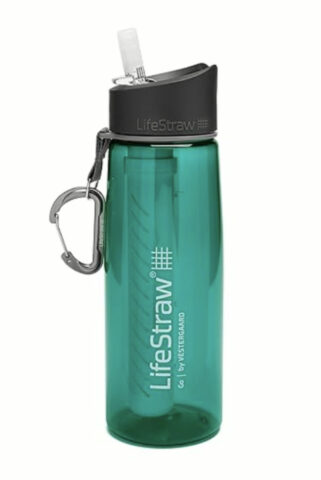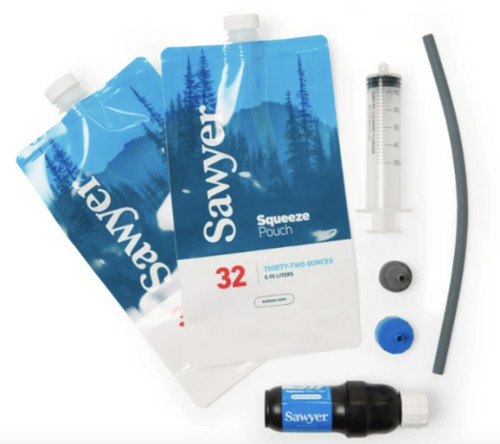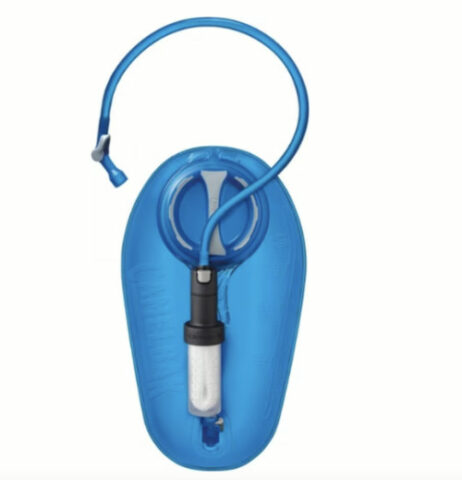If you carry a water filter on day hikes, you can significantly reduce the weight and amount of water you must carry. This is particularly useful if you want to tackle longer routes that require more water than you can comfortably carry. You still have to carefully map out places to obtain and filter water so you don’t go thirsty, but the extra planning is worth it if you want to cover greater distances, hike faster, and become less fatigued. For example, if you routinely carry 3L (6.6 lbs) in a hydration system at the start of a hike, imagine what it would be like to carry no water (0 lbs) or 1L (2.2 lbs) instead. You could reduce the weight you carry by up to 6.6 lbs.
Backcountry vs Urban, Industrial or Agricultural Area Use
Most water filters sold in outdoor stores are designed for use in the backcountry, such as national parks, forests, and state parks that don’t have large concentrations of people or industrial or agricultural activity, including livestock. In backcountry areas, particularly in the continental US and Canada, you can usually get by with a water filter that removes bacteria and protozoa. While microscopic, these organisms are relatively large and easy to filter out from water using low-cost and highly portable water filters.

Water filter use is less appropriate if you hike near urban and residential areas, like city or town parks, that may be impacted by untreated wastewater, faulty septic systems, or leaking sewers. Here, the main concern is viruses, which require a more sophisticated type of water filter called a water purifier, chemical purification like that used in water treatment plants, or ultraviolet light. The same is true if you hike near industrial and agricultural areas, where the water may be contaminated with heavy metals or fertilizers, which are very difficult to remove from water sources. In all these cases, obtaining water from tested sources designated for human consumption or carrying all the water you need is usually best.
Water Filters for Backcountry Day Hiking
While many different types of water filters are suitable for backcountry use, you’ll want one that is easily portable, lightweight, and works quickly. We also recommend using a filter or filter/bottle combination that can be capped at both ends so it doesn’t leak over your other gear once it gets wet.
Bottle-Based Water Filters

Bottle-based filters are very popular because they come with a solid water bottle with a filter inside. You fill the bottle with water, screw on the cap, and start drinking then and there. While you can fill them and carry up to a liter or so of water at a time, they’re best for shorter routes or ones with more frequent water sources. The Lifestraw Go Series Water Filter Bottle, the Grayl Geopress, and the Peak Squeeze Water Filter System are popular choices we recommend.
Squeeze-Style Filters

With Squeeze-style water filters, like the Sawyer Squeeze, you fill a soft bottle (included) with “dirty” unfiltered water and squeeze it to force water through the filter directly into your mouth and into another “clean” water bottle that you can drink from or carry. We also recommend the Katadyn BeFree (1L) and the Hydrapak Seeker 3L Water Container + Filter Cap. The latter is particularly good if you want to filter water for multiple people at once. These water filters include soft bottles that roll up quite compactly when empty to carry filtered or unfiltered water along your route. They’re good when water sources are farther apart. They’re also popular with backpackers for this reason.
Hydration System Inline Filters

If you use a hydration system, inline filters can be another good option. These splice into your hydration system between the bladder and the mouthpiece. When you need to resupply your water, you can partially or fill your hydration system bladder with unfiltered water and filter it on demand as you sip away. This type of water filter is best if you prefer a hydration system instead of drinking from bottles or straws. CamelBak sells an inline Reservoir Filter Kit that snaps into their hydration systems using quick connects, while MSR sells an inline water filter called the Thru-Link that is compatible with any hydration system.
SectionHiker is reader-supported. We only make money if you purchase a product through our affiliate links. Help us continue to test and write unsponsored and independent gear reviews, beginner FAQs, and free hiking guides.
